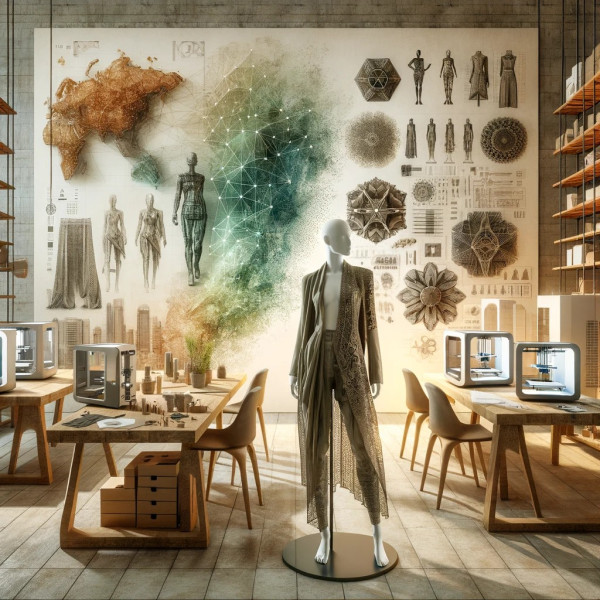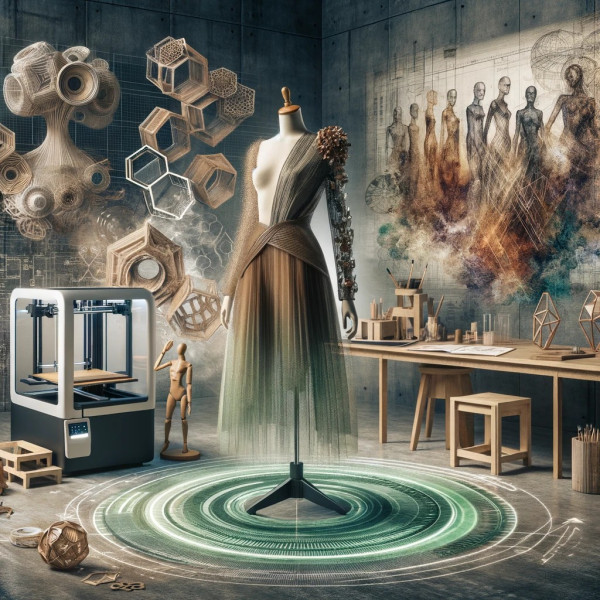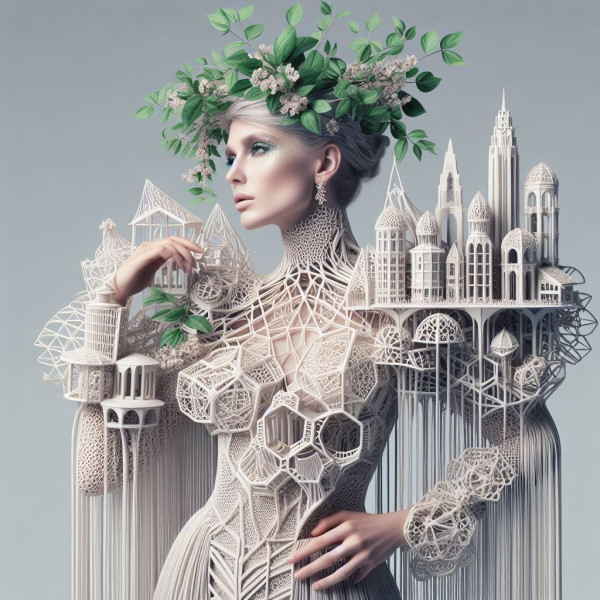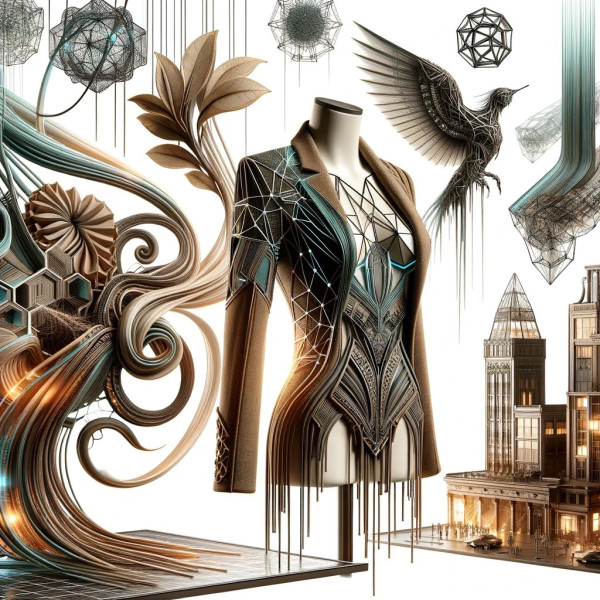United States, 17th Feb 2024, King NewsWire – Introduction: A New Era in Fashion
The fashion industry is at a transformative crossroads, where the fusion of sustainability and advanced technology is reshaping our connection with clothing.
Julia Koerner, an architect who transitioned into a fashion visionary, is leading this revolution.
Her unique journey from architecture to spearheading sustainable fashion, as revealed in her interview with “Your Style, Your Impact,” highlights her innovative and eco-friendly approach.

The Architectural Approach and Influence in Fashion Design
Julia Koerner’s academic foundation in architecture profoundly impacts her fashion design philosophy. Her ability to interweave architectural principles with fashion not only symbolizes innovation but also marks a stride towards a more sustainable future.
Koerner’s method exemplifies the power of cross-disciplinary collaboration, leading to groundbreaking results that are both aesthetically stunning and environmentally sustainable.
Key Innovations:
Material Revolution: Embracing biodegradable, plant-based materials in 3D printing for fashion.
Localized Production: Fostering sustainable practices through local manufacturing in Vienna and Los Angeles.

Technology’s Role in Sustainable Fashion
Koerner’s integration of technology into fashion design goes beyond aesthetics, representing a crucial shift towards sustainable practices.
Digital fabrication, especially 3D printing, embodies efficiency and accuracy, significantly reducing the waste associated with traditional fashion manufacturing.
This method not only promotes sustainability but also sets the stage for innovative design in the fashion industry.
Sustainable Fashion via 3D Printing
At the heart of Koerner’s sustainable fashion philosophy is her inventive use of 3D printing.
This technology transforms the fashion aesthetics while significantly contributing to eco- friendly practices.
Koerner’s pioneering work illustrates the potential of technology to provide sustainable solutions in the fashion industry.
Impactful Statistics:
Waste Mitigation: Up to 35% reduction in fabric waste through 3D printing in fashion.
Energy Conservation: Digital fabrication methods can cut energy consumption by about 25% compared to traditional manufacturing.
Navigating the Challenges and Seizing Opportunities
The fusion of sustainability and technology in fashion, while promising, is not without its challenges. The fashion sector, often entrenched in conventional processes, struggles to adapt to these innovative approaches.
However, trailblazers like Koerner are dismantling these barriers, showcasing the commercial and aesthetic viability of sustainable fashion.

JK3D: A Model for Sustainable Fashion Innovation
Julia Koerner’s JK3D embodies her vision for sustainable fashion. Operating in Vienna and Los Angeles, the brand specializes in the production of sustainable fashion accessories and home décor.
JK3D is a shining example of commitment to local production, eco-friendly materials, and technological innovation.
Technology Meets Eco-Conscious Design
By emphasizing local production and biodegradable materials, JK3D positions itself at the forefront of sustainable fashion.
Koerner’s approach surpasses traditional fashion norms, forming a new paradigm where innovation and environmental responsibility coexist.
Envisioning the Future: A Sustainable, Innovative, and Inclusive Fashion Industry
Julia Koerner paints a vivid picture of the future of fashion, one that is deeply rooted in sustainability, fueled by innovation, and driven by inclusivity. She foresees a future
where machine learning will not only be a part of design processes but will become a major player in enhancing creativity and efficiency within the industry. This integration of technology is not just about providing a new aesthetic or a novel approach but about transforming the very fabric of the fashion industry.
Her vision extends far beyond the realm of aesthetics, it’s not just about what the final product looks like, but also about the impact it leaves behind. She aspires to create a fashion industry that leaves a lasting, positive imprint on the planet, an industry that is as much about looking good as it is about doing good. In her eyes, the future of fashion is not just about the clothes we wear but about the world we live in and the legacy we leave behind.
Conclusion: The Far-Reaching Influence of a Visionary
Julia Koerner’s journey in sustainable fashion stands as a shining beacon of inspiration, illuminating the path for others to follow. Her diverse and influential roles as an architect, educator, and innovator highlight the transformative power of interdisciplinary approaches in fashion. Each of these roles, when combined, paints a picture of a woman who is not afraid to break boundaries or challenge the status quo. Her work serves as a testament to the potential of cross-industry knowledge and collaboration.
As we step into this new era of fashion and design, we are confronted with the undeniable influence of technology. It has become an integral part of our lives, shaping how we interact, communicate, and even how we produce and consume fashion.
Koerner’s work recognizes this shift, harnessing the power of technology to create unique, sustainable designs that challenge our preconceived notions of what fashion can be.
Sustainability is no longer an option but a necessity in the current climate. It’s a critical factor that we must incorporate into all aspects of our lives, including fashion. By choosing to focus on sustainable fashion, Koerner is not just making a statement but also leading a revolution. She is showing us the way forward, offering a glimpse into a future where fashion and sustainability coexist in harmony.
In conclusion, as we venture further into this new era, recognizing and acknowledging the critical role of technology and sustainability in revolutionizing the fashion industry is paramount. It’s a call to action for all of us, a reminder that we each have a role to play in shaping a brighter, more sustainable future for fashion.
SAMPLES FOR BLOG ARTICLE COVER IMAGE

Version 1: (Dall-E)

Version 2: (Dall-E)

Version 3: (Bing)

Version 4: (Dall-E)
FAQs: Navigating the World of Sustainable Fashion and Technology
What is sustainable fashion?
Sustainable fashion is the creation and distribution of garments using environmentally and socially responsible practices. It includes the use of eco- friendly materials, ethical labor, and strategies to minimize fashion production’s ecological footprint.
How does technology enhance sustainable fashion?
Technologies like 3D printing can make sustainable fashion production more efficient, minimize waste, and reduce energy consumption. They also enable the use of innovative materials and precise garment construction, contributing to the industry’s overall sustainability.
Can sustainable fashion be cost-effective?
Though sustainable fashion may have higher initial costs due to quality materials and ethical production, it can be cost-effective over time. The durability and timeless designs of sustainable garments often result in a lower cost per wear.
Is sustainable fashion limited to material choices?
Sustainable fashion extends beyond material choices. It also considers ethical labor practices, energy efficiency during production, and the entire lifecycle of a product,
including its recyclability and biodegradability.
How can consumers support sustainable fashion?
Consumers can support sustainable fashion by choosing brands committed to sustainability, reducing overall consumption, and supporting local and ethical production. It’s also important to educate oneself about the environmental impact of fashion choices.
What future developments are expected in sustainable fashion?
Expected future trends in sustainable fashion include wider use of environmentally friendly technologies, adoption of circular fashion models, and increased consumer awareness and demand for sustainable products.
What role does digital fabrication play in fashion?
Digital fabrication, especially in 3D printing fashion, involves using computer-aided design tools to create precise and intricate designs. It allows for less material waste and opens up new possibilities in garment construction.
Media Contact
Organization: Your Style Your Impact
Contact Person: Cristian Álvarez
Website: https://yourstyleyourimpact.com/
Email: Send Email
Country: United States
Release Id: 1702249811
The post Julia Koerner: Pioneering Sustainable Fashion with a Blend of Technology and Architectural Ingenuity appeared first on King NewsWire. It is provided by a third-party content provider. King Newswire makes no warranties or representations in connection with it.
Disclaimer: The views, suggestions, and opinions expressed here are the sole responsibility of the experts. No Smart Herald journalist was involved in the writing and production of this article.